Social Media platform Management Services – Complete Platform Management for Brand Growth
Maximize your social media impact with Surya Digital Solutions. Expert platform management, content creation, engagement, and analytics for all platforms.
Social Media Platform Management service
In today’s digital world, businesses must maintain a strong social media presence to stay competitive. Platforms like Facebook, Instagram, LinkedIn, Twitter, YouTube, Pinterest, and TikTok offer opportunities to reach audiences, build trust, and drive conversions. At Surya Digital Solutions, we provide Social Media Management Services focusing on Platform Management, helping brands optimize, grow, and manage their social media accounts effectively. Handling multiple platforms can be overwhelming due to the need for consistent posting, engagement, content creation, and performance tracking. Our services ensure that every account remains active, engaging, and aligned with marketing goals, allowing businesses to focus on core operations while we maximize online visibility.

Importance of Consistent Social Media Platform Management
Consistent social media platform management is essential for businesses to maintain a strong online presence, build trust, and achieve measurable results. Regular posting, timely engagement, and optimized content across platforms ensure that your brand stays visible, relevant, and credible. Consistency reinforces your brand identity, improves audience recall, and increases the likelihood of conversions. By managing multiple platforms in a uniform and strategic manner, businesses can maximize ROI, maintain professional standards, and prevent gaps in communication with their audience. Effective platform management also enables better performance tracking, campaign optimization, and timely response to trends, making social media a key growth driver.
1. Social Media Ads Management
Paid social media campaigns are essential for accelerating brand growth and reaching a highly targeted audience. Social media ads allow businesses to define campaigns based on demographics, interests, behaviors, and geographic locations, ensuring that every ad reaches potential customers most likely to convert. Consistent management of these campaigns ensures they remain optimized for engagement, impressions, and conversions. Regular monitoring and analysis of ad performance allow adjustments to targeting, creative content, and bidding strategies, maximizing ROI. By integrating paid campaigns with organic strategies, businesses amplify their reach while maintaining brand consistency across platforms. Professional management ensures that every campaign aligns with marketing objectives, remains relevant to audiences, and generates measurable results. Additionally, retargeting ads help reconnect with past visitors or leads, further enhancing conversion opportunities. With consistent social media ad management, businesses can boost visibility, grow their audience, and achieve tangible business outcomes efficiently.
2. Content Creation & Copywriting
High-quality content creation and strategic copywriting are central to successful social media management. Businesses need regular posts, images, videos, carousels, and interactive content to engage their audience effectively. Well-crafted copy communicates the brand’s voice, value, and messaging in a compelling manner that encourages interaction and conversions. Consistency in content creation ensures followers receive a steady stream of informative, entertaining, or promotional material, reinforcing brand identity and recognition. Creative visuals combined with persuasive copy help capture attention, drive engagement, and increase audience loyalty. Tailored content also allows brands to participate in trending topics, seasonal campaigns, and promotional events, keeping social media strategies relevant. With professional management, content is scheduled and optimized for each platform, ensuring maximum reach. Regular creation and posting of high-quality content strengthen brand credibility, improve engagement rates, and support broader marketing objectives while fostering long-term audience relationships.
3. Community Engagement & Interaction
Building an engaged online community is a vital component of social media success. Community management involves responding to comments, messages, mentions, and reviews in a timely and professional manner. Consistency in engagement ensures followers feel valued, fostering loyalty and trust in the brand. Actively participating in conversations allows businesses to address concerns, gather feedback, and identify potential leads, strengthening relationships with their audience. Interactive campaigns, polls, Q&A sessions, and contests further enhance engagement and create a sense of belonging among followers. By maintaining regular interaction, businesses demonstrate responsiveness and credibility, which is critical for customer retention. A professionally managed community also amplifies brand advocacy, as satisfied followers often share content and recommend the brand to others. Through consistent engagement, businesses can turn passive followers into active participants, enhancing visibility, reach, and long-term social media growth.
4. Analytics & Performance Tracking
Data-driven decision-making is essential to ensure social media efforts are effective. Analytics and performance tracking help businesses understand what content resonates with their audience and identify areas for improvement. Metrics such as engagement rate, reach, impressions, click-through rates, conversions, and follower growth provide actionable insights for refining strategies. Consistent monitoring allows businesses to evaluate campaign performance, optimize content, and adjust posting schedules for better results. Professional social media management ensures that insights are used to improve both organic and paid campaigns, increasing ROI. By analyzing trends and audience behavior, businesses can predict engagement patterns and develop content that aligns with audience preferences. Performance tracking also supports reporting and transparency, providing measurable results to stakeholders. With regular analytics, businesses maintain strategic control over their social media presence, ensuring that every effort contributes to achieving marketing objectives and long-term growth.
5. Social Media Automation & Scheduling
Automation and scheduling are key to maintaining a consistent social media presence without compromising quality. Tools like Buffer, Hootsuite, Later, and AI-powered scheduling platforms allow businesses to plan and post content efficiently across multiple channels. Consistent scheduling ensures that posts reach audiences at optimal times, maximizing visibility and engagement. Automation also enables simultaneous monitoring of multiple platforms, allowing teams to respond quickly to interactions and trends. By streamlining repetitive tasks, automation saves time and allows social media managers to focus on strategy, content creation, and community engagement. Proper scheduling prevents gaps in posting, maintains audience interest, and reinforces brand messaging. Additionally, automation ensures a balanced content mix, integrating promotional, educational, and engaging posts for maximum impact. Professional management of automation tools results in higher efficiency, consistent branding, and long-term growth of social media presence.
6. Crisis Management & Reputation Protection
Social media exposes businesses to public feedback, making crisis management and reputation protection essential. Monitoring brand mentions, customer reviews, and comments allows businesses to respond promptly to negative feedback or potential PR issues. Consistent management ensures that responses are professional, accurate, and timely, preventing minor issues from escalating. Effective crisis management protects brand credibility and demonstrates accountability, building trust among followers. Strategically handling complaints, misinformation, or negative comments helps maintain a positive online image and reinforces customer confidence. Reputation protection also involves proactive monitoring of competitor activity and industry trends to anticipate challenges. Professional social media managers develop contingency plans, ensuring the brand can respond effectively during critical situations. By maintaining vigilance and a structured approach, businesses safeguard their reputation, strengthen public trust, and enhance long-term credibility in a competitive social media landscape.
7. Influencer Marketing & Collaboration
Influencer marketing is a powerful tool to expand reach and enhance brand credibility. Partnering with relevant influencers allows businesses to connect with highly engaged audiences and leverage trusted voices to promote products or services. Consistency in influencer collaboration ensures long-term relationships, sustained exposure, and brand recognition. Proper management includes identifying suitable influencers, negotiating campaigns, and tracking performance metrics to ensure effectiveness. Influencer marketing complements organic social media efforts, creating authentic content that resonates with audiences. Campaigns can include product reviews, sponsored content, challenges, or co-created posts, enhancing engagement and conversions. By maintaining consistent communication and strategic oversight, businesses can maximize ROI from influencer partnerships, strengthen social proof, and increase brand visibility across targeted demographic segments. Professional influencer management ensures campaigns align with marketing objectives while boosting trust and credibility.
8. User-Generated Content (UGC) Campaigns
User-generated content campaigns encourage followers to create and share content related to a brand, enhancing authenticity and engagement. UGC provides social proof, builds trust, and reduces content creation costs while promoting community participation. Consistent promotion of UGC across platforms strengthens brand loyalty and encourages other users to engage with the brand. UGC campaigns can include photo contests, hashtag challenges, testimonials, or reviews, allowing audiences to become brand advocates. Proper management ensures content aligns with brand values, maintains quality, and represents the business positively. By integrating UGC into social media strategies, businesses benefit from higher engagement rates, increased reach, and organic promotion. A continuous focus on UGC allows brands to maintain a dynamic, interactive presence, reinforce customer relationships, and create campaigns that resonate authentically with audiences.
9. Trend Monitoring & Social Listening
Trend monitoring and social listening are crucial for staying relevant in the fast-paced social media environment. By tracking hashtags, trending topics, audience conversations, and competitor activities, businesses can adjust strategies in real time. Consistent social listening identifies emerging opportunities, potential crises, and content ideas that resonate with the audience. Engaging with trends demonstrates that a brand is active, responsive, and aware of audience preferences. Businesses can capitalize on viral topics or industry developments to increase engagement, reach, and visibility. Professional management ensures that trends are incorporated strategically and aligned with marketing objectives. By analyzing conversations and feedback, brands can refine content, enhance community engagement, and predict audience behavior, resulting in more impactful and timely campaigns. Social listening keeps businesses informed, adaptable, and competitive.
10. Cross-Platform Integration & Strategy
Cross-platform integration ensures a consistent brand experience across all social media channels. By aligning content, campaigns, and messaging, businesses reinforce their identity, improve engagement, and maximize the impact of marketing efforts. Consistent cross-platform strategy prevents fragmented communication and ensures that audiences receive cohesive messages regardless of the platform. Integration allows for holistic performance tracking, providing insights into which platforms and content types perform best. Coordinated campaigns across multiple platforms amplify reach, increase conversions, and enhance brand credibility. Professional management ensures every platform works synergistically, strengthening marketing outcomes and providing a seamless user experience. Businesses can maintain visibility, encourage cross-channel engagement, and optimize resources by leveraging cross-platform strategies as part of their social media management plan.
Content Types Used for Businesses
Images & Graphics
Images and graphics are the backbone of social media content. High-quality visuals immediately capture attention and reinforce brand identity. Businesses use branded graphics, product photos, infographics, and promotional banners to communicate messages quickly and effectively. Properly designed visuals enhance engagement, make posts more shareable, and support storytelling. Consistency in colors, fonts, and design style across platforms strengthens brand recognition, builds trust, and makes content instantly recognizable. Whether it’s highlighting products, services, or company values, images and graphics play a crucial role in creating a visually compelling social media presence that resonates with audiences.
Videos & Reels
Videos and short-form reels are among the most engaging content types on social media. Businesses use videos to demonstrate products, share tutorials, tell brand stories, or showcase customer testimonials. Reels, typically 15–60 seconds long, are ideal for grabbing attention quickly and increasing discoverability, especially on platforms like Instagram, Facebook, and TikTok. Videos allow brands to combine visuals, sound, and messaging to create a memorable experience, encouraging viewers to engage, share, and convert. Consistently posting high-quality videos improves reach, increases engagement, and strengthens audience connections.
Carousel Posts
Carousel posts allow businesses to share multiple images or videos in a single post, making it easier to showcase a variety of products, features, or services. They are highly effective for storytelling, tutorials, before-and-after presentations, or promotional campaigns. Users can swipe through each card, increasing engagement time and providing more information in a structured way. Carousels enhance interaction rates and provide opportunities for creative layouts, informative graphics, and calls-to-action on each card. They are ideal for conveying detailed messages without overwhelming the audience, making them a versatile and interactive content format.
Stories & Live Streams
Stories and live streams offer real-time engagement opportunities with audiences. Stories, which appear for 24 hours, allow businesses to share updates, promotions, behind-the-scenes content, or interactive polls quickly. Live streams enable real-time communication, product launches, Q&A sessions, webinars, and event coverage, fostering authenticity and trust. Both formats encourage direct engagement through comments, reactions, and interactive elements, creating a sense of connection between the brand and followers. Using these features consistently keeps the audience engaged, strengthens relationships, and enhances brand visibility across social media platforms.
Polls & Quizzes
Polls and quizzes are interactive content tools that encourage audience participation while gathering insights. Businesses use polls to understand preferences, collect feedback, or spark conversations, and quizzes to educate or entertain users. This type of content increases engagement by inviting users to actively participate rather than passively consume content. Polls and quizzes also provide valuable data that can inform future campaigns, product development, and marketing strategies. By regularly using interactive content, businesses create an engaging social media experience that boosts follower loyalty and strengthens audience relationships.
User-Generated Content (UGC)
User-generated content (UGC) is content created by customers or followers that highlights their experience with a brand. UGC builds authenticity and trust, as people often value peer recommendations over brand messaging. Businesses encourage UGC through contests, challenges, or branded hashtags, then showcase it on their social media platforms. Sharing UGC not only strengthens community engagement but also provides authentic marketing material at minimal cost. Incorporating UGC into social strategies increases credibility, reinforces brand loyalty, and inspires other followers to engage, creating a cycle of participation and advocacy.
Contact Us Today!

FAQ:
Social media platform management involves planning, creating, publishing, and monitoring content across multiple social media platforms. It ensures consistent brand messaging, engagement with followers, and optimization of campaigns for maximum reach and conversions. Effective platform management also includes analytics tracking, ad campaign management, automation, and crisis management. By handling these elements professionally, businesses maintain a strong online presence, foster trust with their audience, and achieve measurable results. This service allows companies to focus on core operations while experts manage their social media growth efficiently.
Professional social media management typically covers major platforms like Facebook, Instagram, LinkedIn, Twitter, YouTube, Pinterest, TikTok, and emerging channels as needed. Each platform requires tailored content strategies, posting schedules, and engagement methods based on audience behavior and platform features. Managing multiple platforms consistently ensures brand visibility, strengthens credibility, and maximizes reach. A comprehensive approach also allows businesses to leverage each platform’s unique potential for organic growth, paid advertising, influencer campaigns, and engagement, resulting in a cohesive social media presence that supports marketing objectives.
The posting frequency depends on the platform, audience engagement patterns, and business objectives. Typically, businesses post multiple times per week on platforms like Facebook, Instagram, and LinkedIn, while Twitter may require daily or multiple daily updates due to its fast-paced nature. Consistent posting ensures the brand stays visible, engages followers regularly, and strengthens recall. Social media managers develop content calendars tailored to each platform, ensuring posts are timely, relevant, and aligned with marketing campaigns. Proper scheduling optimizes reach, maintains audience interest, and supports overall brand strategy.
Yes, professional social media management includes planning, creating, and optimizing paid campaigns across platforms such as Facebook, Instagram, LinkedIn, Twitter, and YouTube. Paid campaigns allow precise targeting based on demographics, interests, behaviors, and retargeting previous visitors or leads. Consistent monitoring ensures ads perform efficiently, maximize ROI, and align with marketing objectives. Campaigns are continuously refined based on performance data, including click-through rates, conversions, and engagement metrics. Integrating paid efforts with organic management enhances visibility, drives traffic, and increases conversions, providing measurable results for businesses seeking growth.
Performance is measured using key metrics such as engagement rate, reach, impressions, click-through rates, conversions, follower growth, and ROI. Analytics tools provide insights into content performance, audience behavior, and campaign effectiveness. Regular monitoring helps identify which posts resonate most with followers and highlights areas for improvement. By analyzing these metrics, social media managers optimize strategies, adjust posting schedules, refine content types, and ensure marketing objectives are met. Performance tracking ensures that social media efforts are efficient, measurable, and aligned with overall business goals, contributing to consistent growth.
Yes, professional social media management includes crisis management to protect brand reputation. This involves monitoring brand mentions, identifying potential issues, and responding promptly to negative comments, complaints, or misinformation. A structured approach ensures that responses are professional, accurate, and timely, preventing minor problems from escalating. Effective crisis management maintains public trust, enhances credibility, and demonstrates accountability. By proactively monitoring platforms and implementing strategic communication during critical situations, businesses safeguard their online image, maintain consistent engagement, and continue building strong relationships with their audience.

